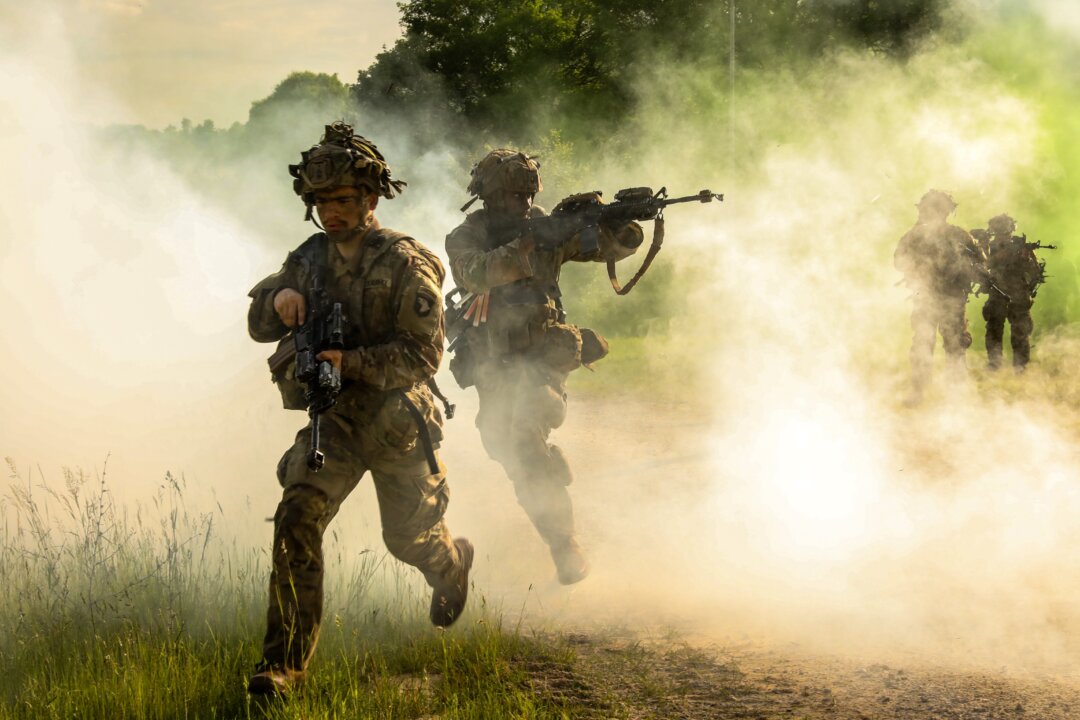The Army Transformation Initiative seeks to deliver new weapons systems, restructure current fighting formations, and cut aging programs.
U.S. Army leaders fielded questions from lawmakers on May 7 over their latest plan to prepare the fighting force and streamline their processes for adopting new technology and weapons systems for future conflicts.
Secretary of the Army Dan Driscoll and Chief of Staff Gen. Randy George unveiled the Army Transformation Initiative in a May 1 statement. This initiative seeks to fulfill three objectives: provide new warfighting capabilities, restructure existing fighting formations, and cut aging programs and systems.
While the Army pursues innovation and readiness, lawmakers are wary of backing costly new programs that don’t fit the force’s needs or eliminating legacy programs.
Members of the House Appropriations Committee posed their questions and concerns about the initiative at a Wednesday oversight hearing.
The Army is seeking new warfighting capabilities, including a long-range missile program, new drone and counter-drone technologies, and a new and more easily upgraded version of the Abrams tank. They’re also working to advance the Future Long-Range Assault Aircraft program, which is meant to succeed the Black Hawk helicopter.
The Army also wants to add artificial intelligence to its command and control systems.
Rep. Steve Womack (R-Ark.) pressed the military leaders to consider canceled programs like the RAH-66 Comanche stealth attack helicopter and the troubled M10 Booker light tank program.
“These are the kinds of things that we have to avoid because we’re in a resource-constrained environment,” Womack said.
“We’re not proud of the outcome of the Booker, but what we are trying to do is not fall prey to sunk cost fallacy, where, because we have invested all of these dollars into this machine that turned out to be inadequate, we’re going to keep purchasing it,” the Army Secretary said. “Instead, what we want to do is be completely transparent.”
Defense Secretary Pete Hegseth, directing the Army’s force reforms, recently called for the service to reduce its helicopter fleets and augment them with more drones, consolidate command structures, and divest some armored and aviation units.
House Appropriations Committee Ranking Member Rosa De Lauro (D-Conn.) questioned the Army’s plans for its Black Hawk helicopters. She referred to the Black Hawk, which entered service in 1979, as “The Army’s vertical lift platform par excellence” and noted that her state is a key manufacturing base for the program.
Driscoll responded that the Black Hawk doesn’t have enough range or speed to be effective in some theaters of potential conflict, such as the Indo-Pacific region.
George said the Army will retire some older Black Hawk versions and consider new systems to fill the helicopter’s many current mission roles.
De Lauro called their comments about the Black Hawk “very troubling.”
At another point in the hearing, Rep. David Valadao (R-Calif.) questioned whether a plan to downsize the Army’s armored vehicle units and adopt more high-mobility formations would leave soldiers reliant on vehicles with less protective armor.
“They get stuck. When you get stuck, you’re also a target,” the Army chief of staff said. “So I think it’s a mix, and that’s what we’re looking at inside of our formations.”

